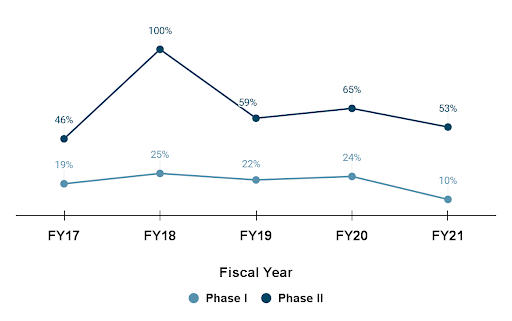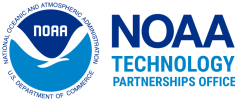SBIR for Applicants
Eligibility and Key Requirements
To be eligible for an SBIR award through the NOAA SBIR Program, small businesses must be:
- American-owned and independently operated
- For-profit
- Company size limited to 500 employees, including affiliates.
- Principal Investigator employed (at least 51%) by the applying small business
- The proposing small business must carry out a minimum of two-thirds of the work for Phase I and half of the work for Phase II.
- Work must be done in the U.S.
Resources
- NOAA SBIR Fact Sheet
- Fraud, Waste, and Abuse (FWA) Training (Required)
- FWA Training Certificate
- SBIR.gov
- SBIR Tutorial Videos
- Business USA SBIR Tool
- Phase I & Phase II Application Checklists
- Phase I & Phase II
Cover Pages - NOAA SBIR FY24 Phase I Notice of Funding Opportunity
Competition Information
Phase I
- Project feasibility/Proof of Concept
- Up to 6 months duration
- Up to $175,000 funding
Phase II
- Concept research and development
- Up to 24 months duration
- Up to $650,000 total funding
Phase III
- Prototype commercialization
- No set timeframe
- Third-party funding, no SBIR funds
FY 24 Phase I Topic Areas
NOAA’s FY 24 SBIR competition is aligned with NOAA’s Weather Water Climate Strategy. Current topics include:
- Extreme Events and Cascading Hazards
- Coastal Resilience
- The Changing Ocean
- Water Availability, Quality, and Risk
- Effects of Space Weather
- Monitoring and Modeling for Climate Change Mitigation
Additional cross-cutting focus areas include:
- Uncrewed Systems (UxS)
- Artificial Intelligence
- Data and Cloud Computing
- ‘Omics
- Citizen Science
Please check back each year for updates to these topic areas.
Evaluation and Selection Criteria
SBIR proposals are reviewed by a panel of NOAA scientists and engineers, as well as experts from outside the agency. Proposals are evaluated based on the following criteria:
- The scientific merit and technical approach of the proposed research (40 points)
- The level of innovation the proposed effort offers to the research topic area (20 points)
- Consideration of an application’s commercial and societal impacts and potential applications (20 points)
- Qualifications of the proposed principal/key investigators, supporting staff, and consultants and availability of instrumentation and physical facilities necessary to complete the proposed work (20 points)
Following the technical review, we will rank and award selections based on their review score and other considerations, such as:
- Diversity of project types and distribution across the topic areas
- Diversity of participants with respect to geography, type of institution, type of partners, and researchers
- Past performance under SBIR
- Partnerships and/or participation of targeted groups
- Possible duplication with other federally-funded research
- Availability of funding
Phase I and II Success Rates

